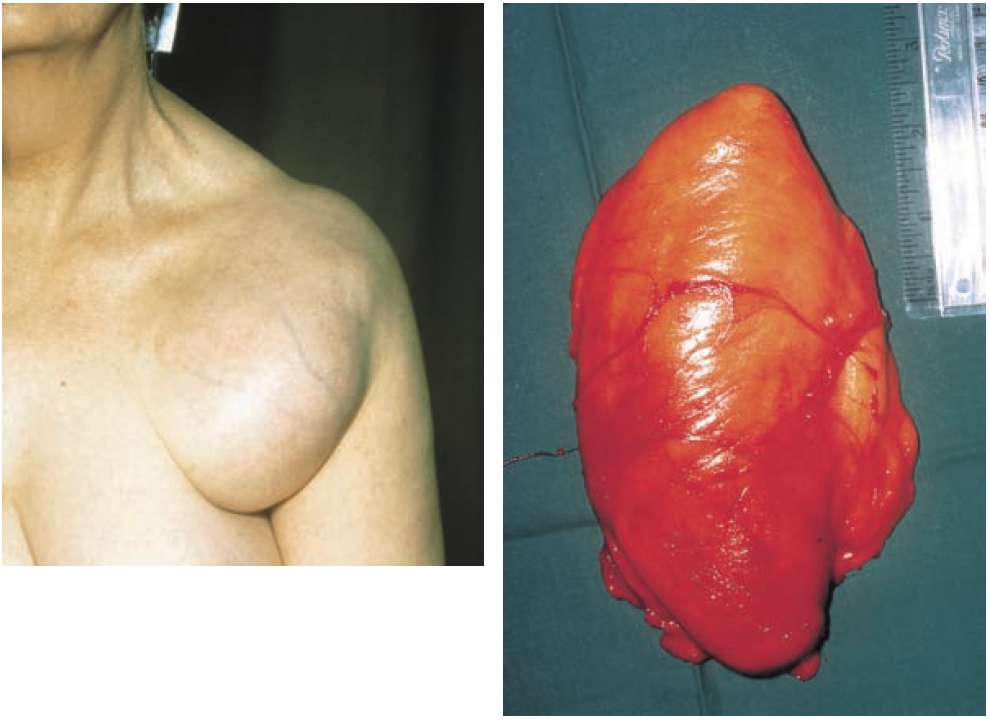This post is an answer to the Case – Lump on the Chest
What is the most likely diagnosis?
A large, benign, subcutaneous lipoma.
What physical signs would you have expected to find on examination of the lump?
The lump would have been soft, lobulated and subcutaneous, with the skin moving over it. It would have been freely moveable on the underlying pectoralis major muscle when this was tensed by getting the patient to put her hand on her side and to press firmly. Fluctuation in two directions at right angles to each other and transillumination with a torch in a darkened room would be positive.
Why do subcutaneous lipomas fluctuate?
Fluctuation occurs because lipomas are made up of aggregates of fat cells, each cell containing a microscopic globule of liquid fat. Note that students often reply to this question by saying that fat is liquid at body temperature – yet subcutaneous fat does not come pouring out of a wound when the surgeon makes an incision through the skin!
Lipomas are widely distributed over the surface of the body, but there are three areas of skin where they never occur –name them and give the reason for this.
The palm of the hand, the sole of the foot and the scalp.In these areas fat occurs, but lies within dense fibrous septa.
Very rarely these tumours are malignant. What clinical features would suggest this?
A history of recent, rapid enlargement, possibly accompanied by pain. On examination, the mass feels firmer than a benign lipoma, may be less mobile and appears more vascular. Malignant change is so uncommon that removal of a lipoma that is not bothering the patient is not necessary.



